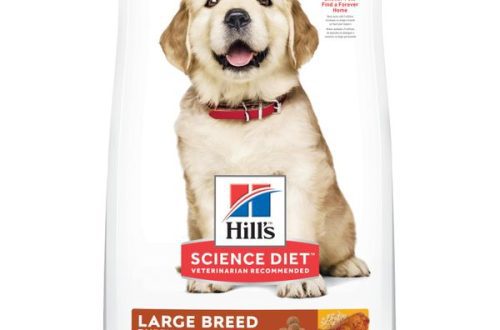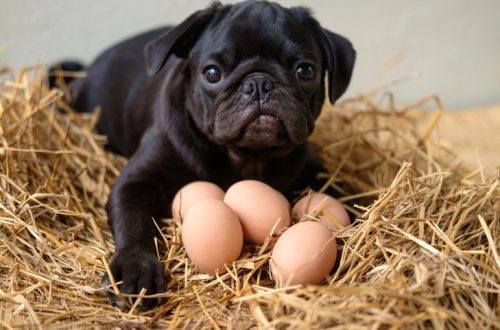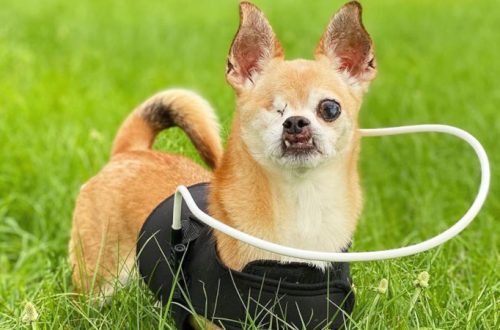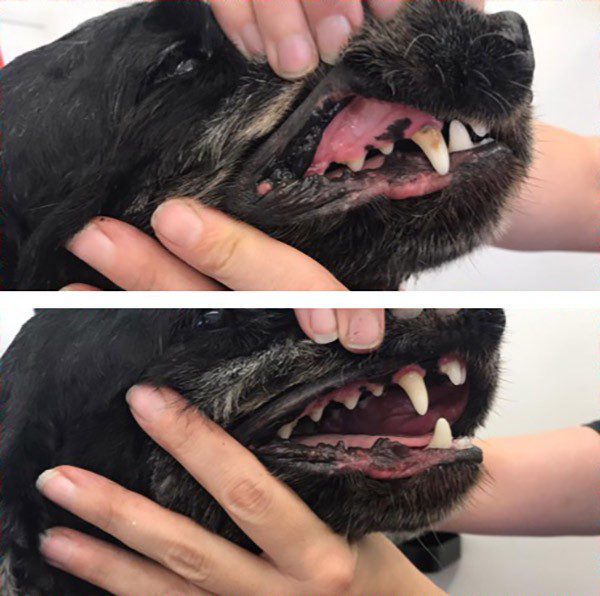
Ahoana ny fiborosy nifin'ny alikanao: ao an-trano sy amin'ny ultrasound
Hevitra ato Anatiny
About dog teeth
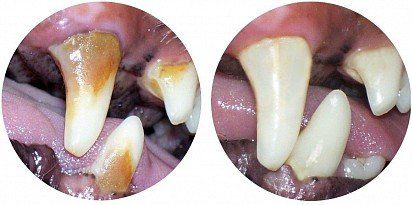
Before and after dental calculus removal
Adult dogs belonging to most breeds have 42 teeth, 20 of which are upper and 22 lower. Four pointed fangs serve to tear food, the front 6 upper and 6 lower small incisors – to capture it, the side teeth – to chew. Among dogs from the group of decorative breeds, incomplete teeth are often found, that is, they are missing one or even several teeth.
As with most mammals, a dog’s permanent teeth are formed in childhood in place of falling milk teeth. This process begins, as a rule, at the age of 4 months of the animal. It proceeds quite quickly and ends at the end of the 7th month of the pet’s life. Caring for milk and permanent teeth has its own characteristics.
About the need to brush your teeth
Systematic care of dog teeth is important not only for the aesthetics of your pet’s exterior and the elimination of the repulsive “aroma” coming from his mouth, but also for the prevention of various diseases of the oral cavity. First of all, brushing your teeth reduces the risk of tartar formation, which provokes caries, periodontal disease, stomatitis, gingivitis, abscesses. A number of diseases of the oral cavity can acquire a chronic form, which, in turn, poses a danger to the functioning of the cardiovascular and immune systems of the animal’s body.
The reason for the formation of tartar is the formation of soft plaque, which gradually hardens, so only the emerging plaque must be removed. Usually teeth cleaning is carried out 1-2 times a week. However, many animals are prone to rapid tartar formation, including poodles, cockers, terriers, and dogs with malocclusion. For them, daily hygienic manipulation may be indicated.
No matter how often you brush your dog’s teeth, this procedure is not a complete “fuse” against the occurrence of dangerous pathologies in the oral cavity. Inflammatory processes may be associated with malnutrition of the animal, or be symptoms of other, more serious internal diseases. However, in the process of processing the teeth of the “patient”, you will be able to detect the first signs of inflammation in a timely manner. The first thing that should worry you is the constant smell from the animal’s mouth that does not disappear even after the dental procedure, as well as reddening of the gums, bumps, tumors, and bleeding. If you notice these symptoms, hurry to go with your pet to the veterinarian.
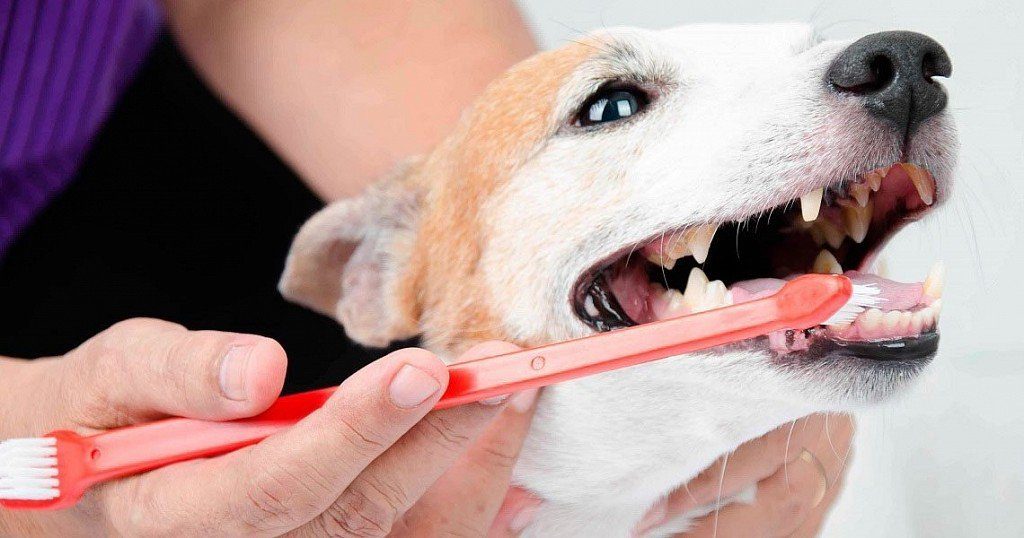
Teeth brushing is a necessary hygiene procedure for dogs.
How to train your dog to brush your teeth
Brush your dog’s teeth using special toothpastes should be at the time when she is 7-8 months old. During this period, her permanent teeth will have time to completely replace the milk teeth. Until this age, dogs do not need brushing their teeth as such, but the point of these manipulations is to accustom the pet to the procedure in advance. To do this, the process is imitated, letting the dog understand that caring for her oral cavity is not an execution.
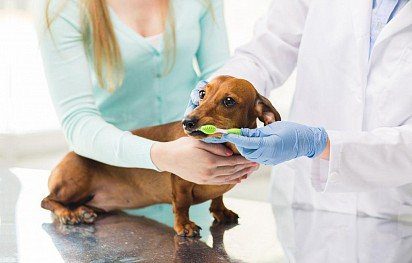
Teeth cleaning at the veterinarian
Some puppies with an accommodating character do not mind when the owners periodically rub their teeth lightly with gauze dipped in warm water. However, most pets are initially desperately resisting. Rebels need a special approach, fraught with cunning – they should be interested by demonstrating what benefits they can get if they show humility.
In order for the puppy to associate the hygiene procedure with pleasant moments, proceed as follows: cook a light beef broth, without salt, vegetables, other components, cut the meat into small cubes, wrap gauze or cotton wool around your index finger and dip the swab into the broth. Sit comfortably, take the baby in your arms, let him sniff the fragrant matter, gently open the dog’s mouth and gently, in a circular motion, wipe the dog’s teeth without pressing on them with your finger. During the procedure, clearly and confidently pronounce the word “teeth”. If the baby behaves calmly, gently cheer him up with the words “good”, “well done” and treat him with meat slices. If the puppy starts to squeal, release its sharp claws, or tries to bite you, do not reward him with a treat.
As the puppy gets older and gets used to brushing his teeth with gauze or cotton, you can introduce the dog to the smallest toothbrush with soft bristles. Do not forget that until the complete change of the pet’s teeth, you should only imitate their cleaning, which means that all touches to the jaws should be very gentle, without the slightest effort.
A dog that has been accustomed to hygienic treatment of the oral cavity since childhood will, over time, tolerably endure systematic tooth brushing using special tools. This will also bring less hassle to the veterinarian if you happen to contact him with questions related to dentistry.
Cleaning your dog’s teeth at home
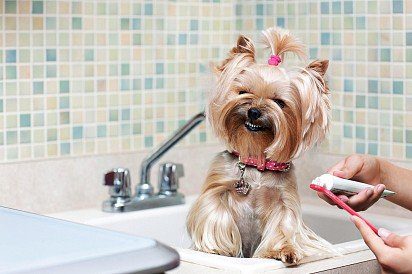
It is important to teach a dog to brush his teeth from 7-8 months, so that later he gets used to it and easily endures it.
When it comes to caring for a dog, brushing your teeth is not at all the most difficult. Knowing how to properly implement it, any owner in most cases will be able to maintain oral hygiene of his pet without much effort and time.
To get started, head to the pet store to pick out a toothbrush and toothpaste for dogs. The brushes come in a variety of sizes so you can easily find the right model for you. They are distinguished by a variety of shapes, they are traditional – with bristles, or flexible rubber with soft teeth. Among brushes with bristles, those models where the bristles are natural and ultra-soft are most comfortable for dogs, however, in cases where the plaque on the dog’s teeth has hardened, it is necessary to give preference to tools for brushing teeth with hard bristles. They should be used with extreme caution, avoiding injury to the gums. The brushes are usually attached nozzles – ring fingertips, designed for the index finger.
The range of toothpastes for dogs is quite wide. Judging by the reviews of pet owners, the following brands are popular:
- Harts Dental Beef Flavored (USA). Tube (85 g) – 120-140 rubles;
- Canine Tooth Past 8 in 1 (USA). Tube (90 g) – 220-240 rubles;
- Beaphar-Dog-a-Dent (Netherlands). Tube (100 g) – 230-250 rubles;
- Gimborn Dental Care with liver flavor (Germany). Tube (50 g) – 360-390 rubles.
Please note that toothpaste intended for humans should not be used to clean dog teeth. Although effective in terms of removing plaque, it nevertheless includes additives that, together with the foam, can enter the animal’s body, causing digestive problems or serious allergies. In some cases, too much foaming of the “human” paste can lead to suffocation of the animal, which instinctively swallowed the foam. Pasta, specially created for dogs, does not foam at all, and even if the dog swallows part of it, it will not bring him any harm.
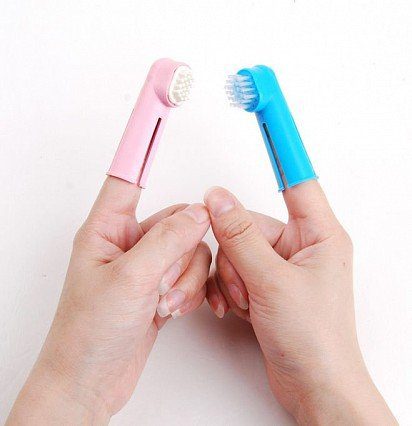
Finger toothbrush for dogs
You will also need gauze. It is used for gentle cleaning of teeth – a delicate procedure, appropriate if plaque is removed systematically and does not have time to harden. This is the simplest cleaning method, in which the gauze is simply wrapped around the index finger, then a small amount of paste is applied to the fabric and tooth by tooth is massaged in a circular motion, lightly touching the gums.
If the formed plaque cannot be removed in the above way, you will have to use a toothbrush. To remove slightly coarsened plaque, use a tool with a soft bristle, in advanced cases, you will need a brush with a hard bristle. When using the latter, your movements must be extremely careful: even healthy gums can bleed with excessive pressure on them.
Before starting the procedure, slightly moisten the brush, then apply toothpaste on it. Lift the dog’s upper lip and slowly, in a circular motion, brush the outer side of the teeth – first on one side, then on the other. Try to clean the back teeth as thoroughly as you clean the front teeth. As practice shows, it is on them that the raid is most pronounced. Try to brush the back of your teeth as well, despite your pet’s objections – this part of the procedure tends to annoy the dog the most.
At the end of the hygiene session, excess paste should be removed with a damp gauze or cotton swab, because your pet, unlike you, is not able to rinse his mouth. He will not be very pleased to swallow the paste, and this will cause him uncomfortable associations with the process of brushing his teeth.
It is recommended to brush your dog’s teeth 2-3 hours after feeding. Approximately the same time should precede the next meal.
Cleaning your dog’s teeth with ultrasound
Even the most responsible owners, who never forget to treat the oral cavity of their pets and do it regularly, veterinarians advise their pet to have such a dental procedure as ultrasonic cleaning every two years. If you noticed that closer to the gums, the dog’s teeth began to acquire a brownish tint, and it is impossible to remove it with a brush, you should contact a specialist immediately, as this sign indicates the formation of tartar in the animal. You cannot remove it yourself.
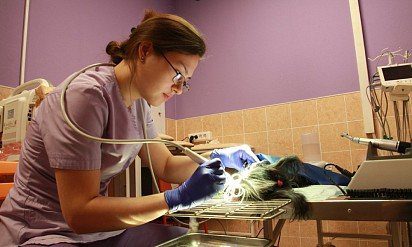
Ultrasonic teeth cleaning in the clinic
In specialized clinics, the dog is relieved of tartar with the help of an ultrasonic device – a scaler. Ultrasonic manipulation allows you to radically clean the dog’s teeth, removing plaque even in the most hard-to-reach places from the outside and back. To carry out such a procedure, an average of half an hour to an hour and a half is required, it is performed with or without anesthesia. Whether your pet needs anesthesia, the specialist will decide, but the last word is yours.
As a rule, calm dogs, accustomed to brushing their teeth, either do not require anesthesia, or they are given a mild sedative. Wayward and capricious patients may be recommended sedatives + local anesthesia. For unpredictable, especially aggressive animals, the procedure is performed under general anesthesia, which is selected individually after a detailed clinical blood test. Small dogs of decorative breeds, which do not tolerate anesthesia very well, are swaddled, fixing them rigidly on the table.
The cost of cleaning a dog’s teeth in the clinic is from 2500 rubles. The procedure can be carried out at home. In a number of clinics, a doctor’s house call is free and included in the total cost, others value such a service at an additional amount – from 500 rubles.
Dry food as a dentifrice
There is an opinion that feeding a dog with high-quality dry food is an excellent prevention of tartar. Some veterinarians agree with this, others believe that with such a diet, the rate of its formation is simply reduced by two to three times. Still others are generally skeptical about this statement.
Justifying the benefits of feeding dogs with dry food, the following arguments are usually made:
- after eating dry biscuits, a very small amount of food remains in the spaces between the teeth, which limits the nutrient medium for the development of bacteria;
- the size and texture of the dry product is such that the animals somehow have to bite through it by sinking their teeth deep into it. Thus, there is a mechanical removal of plaque.



